Parents always choose the best for their children. Today, the best often means “the smartest.” In this article, I will tell more about the BabyTech sphere and explain how IoT technology makes childcare more secure and effective.
BabyTech devices are not always absolutely new inventions: these can be familiar objects enhanced with sensors that collect valuable information. There is several smart BabyTech products that parents can buy for healthy children, and this list is growing constantly.
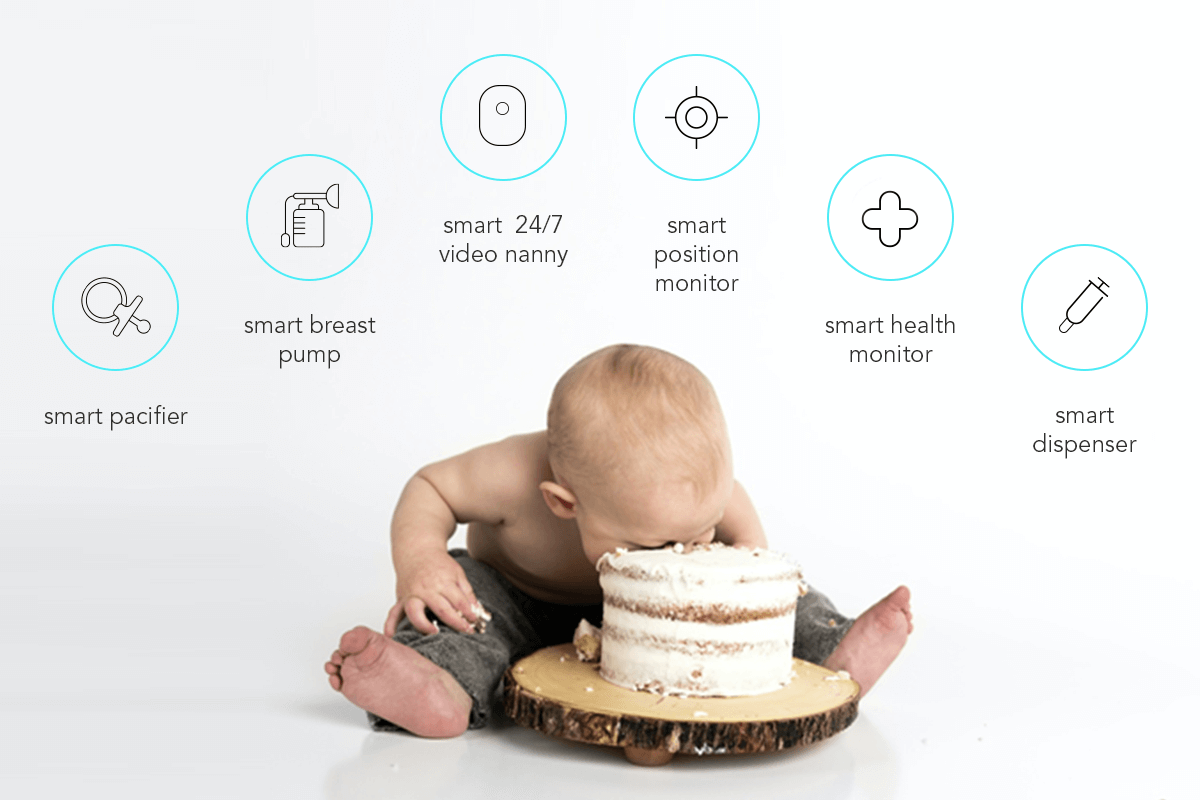
Always in demand are smart BabyTech aids such as:
- Smart wearable breast pumps – hands-free, “stealth” breast cups;
- Smart dispensers – syringes for medicine dispense into the mouth;
- Smart pacifiers – with temperature check-ups and GPS tracker;
- Stationary baby room monitors – with cameras, microphones, and speakers;
- Smart bassinets – cribs that rock, shush, and stabilize the baby;
- Wearable monitors, trackers – to track the baby’s positions;
- Wearable heart rate and oxygen monitors – if recommended by the doctor.
How the Internet of Things Apply in Childcare
An IoT system for childcare consists of sensors with mini-computer processors that collect the data from responders or “things” to make a decision and action based on this data via Machine Learning algorithms. Machine Learning is the capacity of machines to mimic human behavior in learning from examples and decision-making. This makes IoT devices for childcare smart. IoT for childcare can try to return the responder (baby) to their “normal” state and send via a connectivity method reports and alerts to other devices, for example, parenting applications. IoT for childcare learns from the baby what is normal for them and never causes them any harm.
For example, if the baby is not sleeping and moves in a smart bassinet, the smart bassinet rocks the baby. When the baby starts to cry in a smart bassinet, the smart bassinet shushes the baby. And it does so while reporting the data to the parent’s app. At this time, the parents can be in another room and know if their baby is sleeping and, if not, how effective the rocking and shushing are going on.
IoT developers can tackle many situations the parents face by connecting responders with applications via wireless connectivity and taking appropriate action if the responder is in a certain state.
Best Baby Tech Examples: Smart Pacifier with Thermometer and Location-Tracker
Babies need pacifiers from 0 years and are emotionally ready to give them up at about 2-4 years. They start walking at about 1. BabyTech offers smart pacifiers with temperature and proximity sensors that show the baby’s temperature and location in the parent’s app.
With smart pacifiers, parents can:
- Know if the baby currently has a fever, and see temperature graphs;
- Know exactly the location of their child;
- Limit the range that the child can cross and be alerted when they cross it;
- Share this information with relatives and doctors.
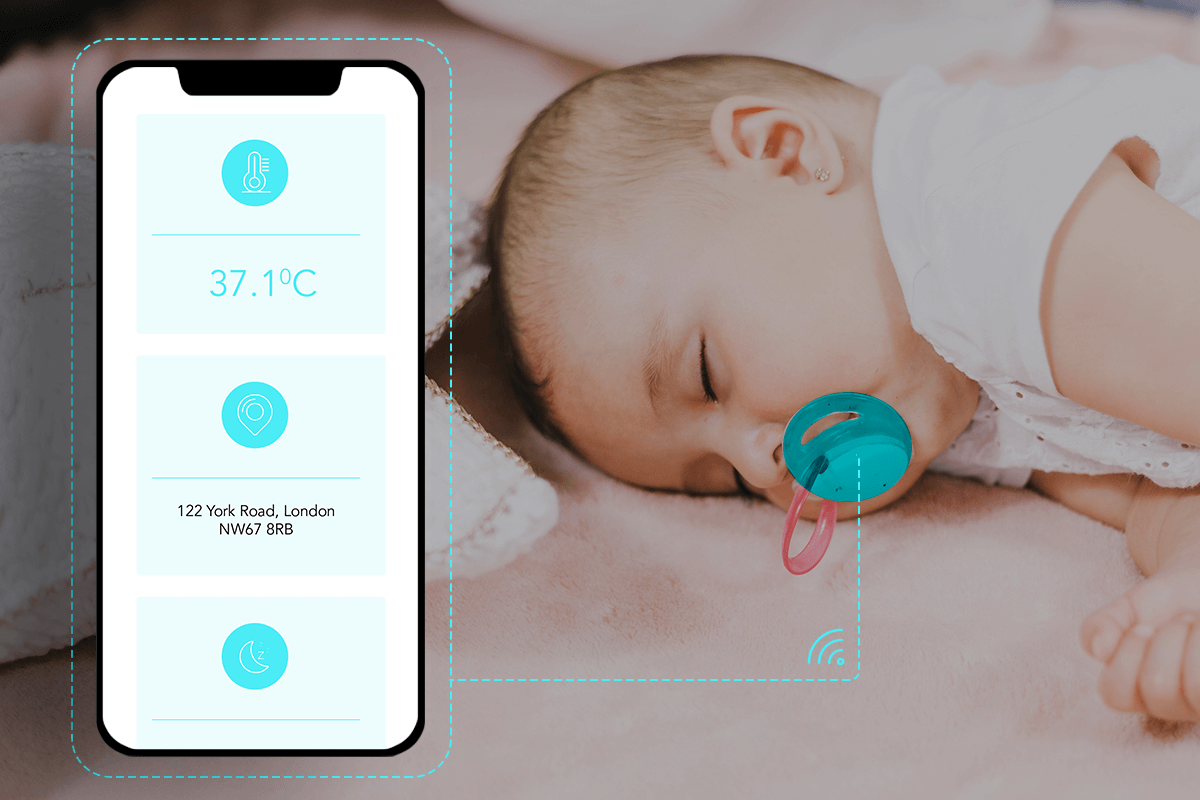
LIFEHACK 1 – “It’s 3 am and I am not in bed.”
When it’s 3 am, your baby is crying, and you cannot figure out if the baby’s head is hot or not, you can pacify the baby and check their temperature at the same time. Give them a smart pacifier; you do not need an extra thermometer.
LIFEHACK 2 – “I turned around for one second, and he was gone.”
With a smart pacifier, parents can always know when their toddler is missing from the playground, is lost in an amusement park, or, unfortunately, the stroller is missing. The parents can immediately know where the lost child is to take timely action.
All the parents need to do is to make sure that the child is not going to throw it away. Smart pacifier makes children smarter from a very early age because the parents need to explain how it works and why they need to keep it.
Child Find of America warns:
“Before doing anything else, contact your local police immediately. You might have heard that you need to wait 24 hours before reporting a missing person, but the waiting period is a myth. In fact, taking action within the first 48 hours is crucial to bringing a missing child home.”
The usual range limit of a smart pacifier equals 525m (150 feet). Parents can make it shorter in crowded places and supermarkets and longer if they can see the child clearly, for example, on an almost empty beach.
Smart pacifiers are recommended to:
- Parents who need a thermometer;
- Parents who need a baby location tracker;
- Parents who raise their children in big cities;
- Parents who have safety concerns outside the house;
- Parents who have more than one little child;
- Parents who are going to travel with the child;
- Kindergartens – for active toddlers and group leaders;
- Nanny agencies.
Smart Baby Medicine Dispensers – Medicine is Not a “Bismol” Anymore
Smart baby medicine dispensers are extremely popular BabyTech products. Parents who need to put medicine into children’s mouths know exactly how much time, effort, and tears it costs. Smart baby medicine dispenser represents a silicone syringe that measures the child’s mouth, tongue, and throat and sprinkles the medicine avoiding the tongue and throat and reducing unpleasant taste and spitting up. The Internet of Toddlers dries oceans of children’s tears. Also, a smart baby medicine dispenser makes children smarter. Parents have to teach the children how the medicine dispenser avoids their tongue and lure them to test it.
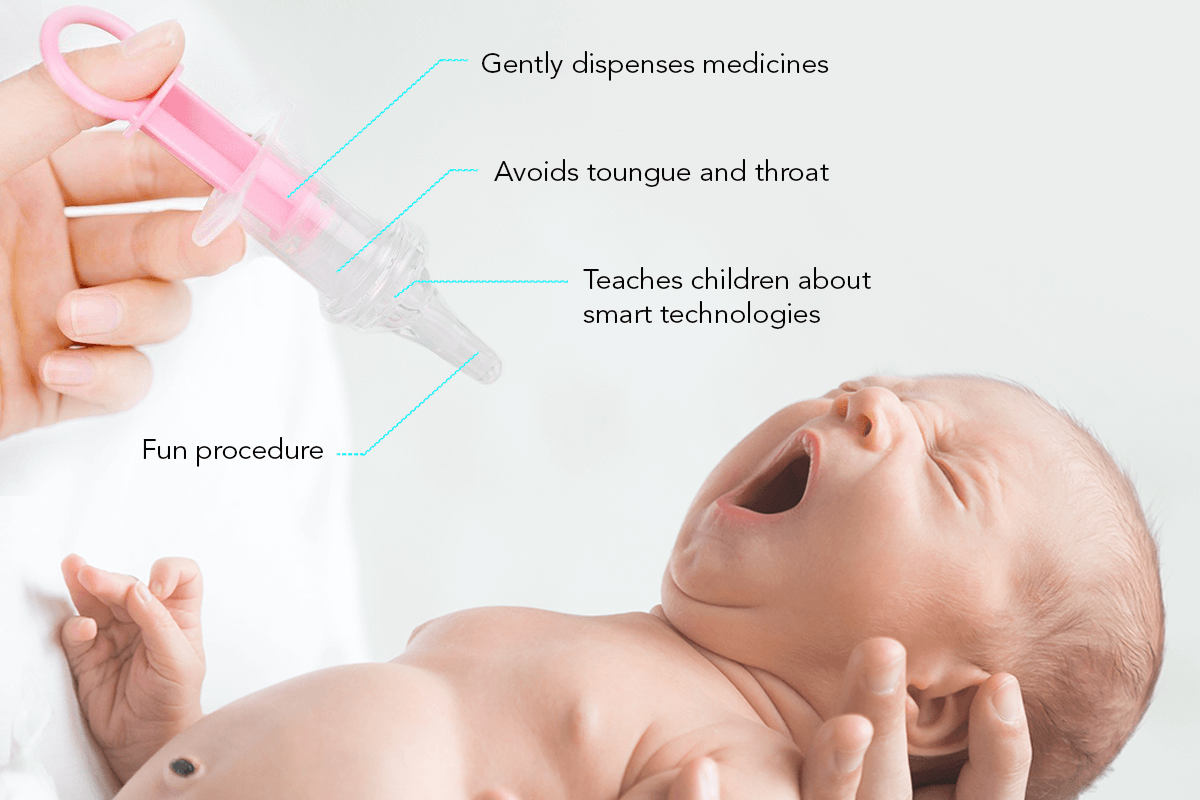
Smart baby medicine dispensers are recommended for babies and children who:
- Are too sensitive to the taste of the medicine;
- Cannot swallow the medicine and spit up.
The smart syringes can have different designs and sizes to comply with the child’s image of a harmless and fun procedure.
Give the child one less reason to cry and one more reason to learn.
Smart Breast Pumps – New Freedom with “Stealth” Pumping
Smart breast pumps represent breast cups with small smart pumping devices in them and milk reservoirs that send the pumping progress to the mother’s application. Mothers can wear them inside the nursing bra, start pumping by a press on a press button on either cup and charge them via USB.
No one will notice that the mother is pumping at the moment, but since this procedure feels different for every woman, the mother needs to choose the place that she is comfortable in.
The benefits of the smart breast pump for mothers:
- Hands-free;
- Free to move;
- “Stealth” pumping;
- Modes of pumping;
- Start and stop the pumping at any time on the cup or via the app;
- Easy to use: assemble, pump, wash, and charge;
- Monitor milk volume on each breast in the app while pumping;
- Track the pumping history for each breast.
Mothers can be sure that smart breast pump will never hurt them, as it uses Machine Learning mechanisms that adjust to them.
Smart breast pumps are recommended to:
- Mothers who breast-feed and/or pump;
- Maternity houses.
Pumping feels better now.
IoT for BabyTech: Wearable Baby Monitors, Baby Position-Trackers
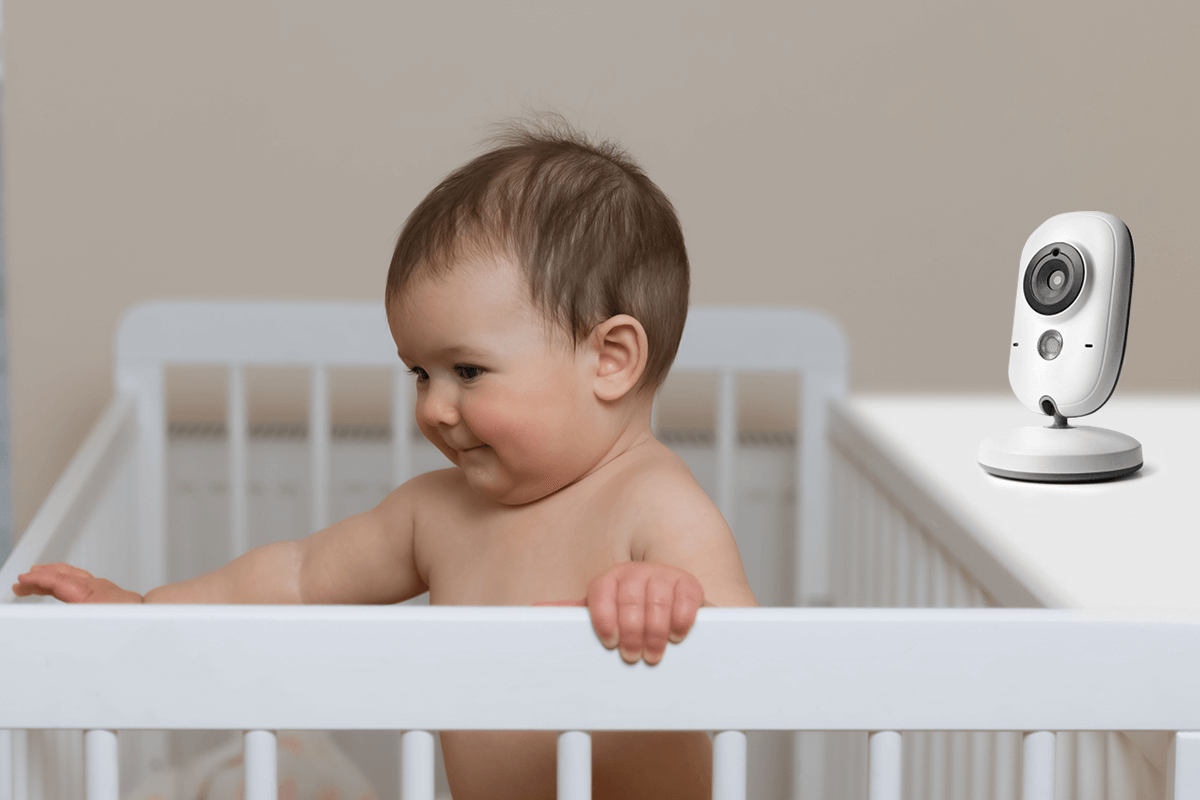
If parents are not around and need to know whether the baby is on their back or rolled over, they can use IoT for childcare and attach a smart wearable clip to the baby’s shirt.
This small smart position tracker can monitor if the baby is lying on the back, rolled over, is sitting, or crawling around. The baby monitor will report or alert in parents’ smartphone or wristband with icons, sounds, and color codes.
The smart baby monitor can have a mike and play with parents when the baby is crying, coughing, laughing, or trying to say words. It can also have a speaker for the parent to talk to the baby. Also, the baby monitor can have a very handy function of shushing the baby itself, playing white noise, or lullabies.
Babies cannot talk and that is why it is up to parents to decipher them. Wearable baby monitors can check babies’ temperature and alert parents if they are having a fever.
The smart position tracker can recommend age-appropriate games to analyze the child’s behavior. It can also be programmed to give doctor-recommended pieces of advice.
Unlike smart pacifiers, this type of smart baby wearable is usually meant for in-house use and has a limited range. This means parents cannot attach the position tracker to the child and leave the child outside the house.
Smart wearable baby monitors are recommended for:
- The newborn babies who start to roll over;
- Children who begin to sleep alone in bassinets;
- Parents with little children who are busy at home and cannot watch them.
Now, “sitting with the baby” means sitting in separate rooms.
IoT for BabyTech: Wearable Heart Rate/Temperature Monitors, Baby Health-Trackers
If doctor-recommended, parents can decide on IoT for childcare and smart leg bracelet, sock, or patch to monitor the baby’s heart rate, pulse, oxygen rate in blood, and temperature.
Parents deserve to feel secure about their babies all the time, have normal lives, and not dash every 5 minutes to check on their babies. Smart wearable baby health monitors can trigger different devices: send regular reports to the parents’ app, light, and buzz warning buttons, parents’ wristbands, or healthcare center hub. Baby health monitors give peace of mind to exhausted parents and ensure in-time alerts of children’s healthcare centers.
Wearable heart rate/temperature monitors are recommended for:
- Child healthcare centers;
- Parents who are doctor-recommended to track their baby’s heart and breathing;
- Nanny agencies.
Make your problem doctor’s problem. Enjoy smart parenting.
IoT for BabyTech: Stationary 24/7 Monitors, Video Nannies
Smart baby monitors are meant for babies at home. The main advantage of any video camera is that parents can see the baby 24/7.
IoT for childcare goes further, and video nannies can:
- Display the baby on the parent’s unit;
- Report to parents’ smartphones;
- Auto-play white noise or lullabies when the baby is fussy;
- Switch on night lights if the baby is afraid to sleep in the dark;
- Have a mike and speaker – for the parents to hear the baby and talk to them remotely.
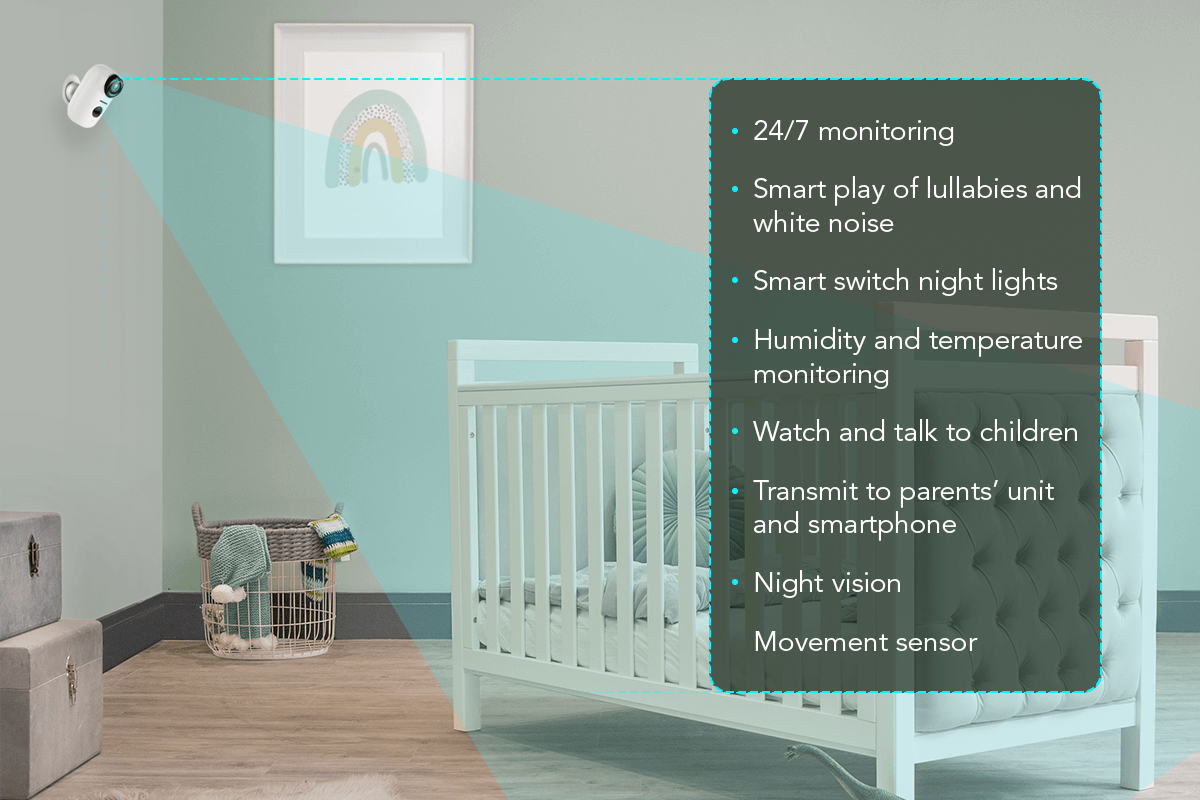
Usually, parents put these baby monitors on the table by the bassinet or attach them to the wall.
The smart stationary baby monitors can have a superfluous tray of functions:
- Night vision – to see the baby at night;
- Movement sensor – to report when the baby is active at night;
- Room temperature and humidity – to know if they affect the baby.
The parents’ unit of the smart baby monitoring system can also vary:
- Range;
- Display;
- Video quality;
- Sound quality;
- Nursing timer;
- Sound sensor settings;
- Brightness settings;
- Voice activation VOX;
- Switch to a power bank;
- Screenshots;
- Video recording;
- Rotation of a video camera.
Smart stationary baby monitors are perfect if parents want both to see their children and have smart features.
Conclusion
Smart BabyTech devices make children smarter and solve easy tasks that parents encounter, like giving medicines, and complex tasks, like shushing and rocking the baby remotely. They ensure tackling vital health-related situations and security issues with the lost children. IoT for childcare can raise the quality of life to a very high level for mothers with smart breast pumping, couples, giving them more time together, and personnel of nannies’ agencies and children’s hospitals. Different sets of functions and designs can affect the price range of smart BabyTech products and make them affordable for different social groups and institutions.




